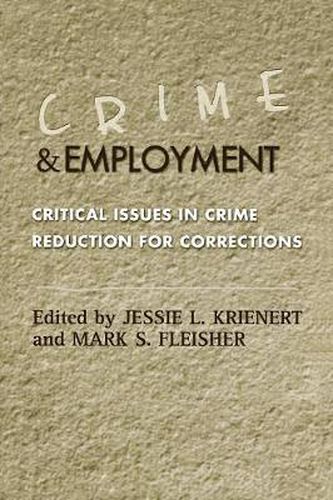Readings Newsletter
Become a Readings Member to make your shopping experience even easier.
Sign in or sign up for free!
You’re not far away from qualifying for FREE standard shipping within Australia
You’ve qualified for FREE standard shipping within Australia
The cart is loading…






Crime and Employment crystallizes the issue of work as a rehabilitative instrument in the modern correctional environment. It explores the effect of employment on crime and recidivism, with its implications for correctional programs and operations as well as for ex-offender reintegration into the community. The professionals contributing to this volume evaluate the effectiveness of employment in enabling offenders to desist from crime; the roles of prison versus community correctional services; the success of work programs for older versus younger offenders; the effect of industrial employment on reducing prison misconduct and post-release recidivism; the relevance of prior employment, substance abuse histories, poverty, and family contexts on subsequent inmate work programs; and the availability of quality employment, lawful lifestyles, and community vocational programs in sustaining economic rehabilitation of offenders. This book will be of great value to practitioners and policymakers alike in the areas of corrections, criminal justice, criminology, social problems, labor policy, social welfare, deviance and social control.
$9.00 standard shipping within Australia
FREE standard shipping within Australia for orders over $100.00
Express & International shipping calculated at checkout
Crime and Employment crystallizes the issue of work as a rehabilitative instrument in the modern correctional environment. It explores the effect of employment on crime and recidivism, with its implications for correctional programs and operations as well as for ex-offender reintegration into the community. The professionals contributing to this volume evaluate the effectiveness of employment in enabling offenders to desist from crime; the roles of prison versus community correctional services; the success of work programs for older versus younger offenders; the effect of industrial employment on reducing prison misconduct and post-release recidivism; the relevance of prior employment, substance abuse histories, poverty, and family contexts on subsequent inmate work programs; and the availability of quality employment, lawful lifestyles, and community vocational programs in sustaining economic rehabilitation of offenders. This book will be of great value to practitioners and policymakers alike in the areas of corrections, criminal justice, criminology, social problems, labor policy, social welfare, deviance and social control.